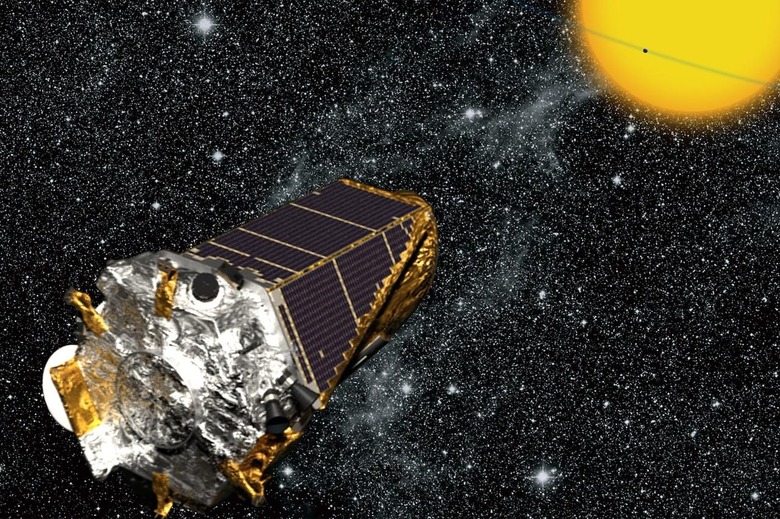100bn Megaton Superflares Make "Most Earth-Like" Planet A No-Go
One of the planets earmarked as potentially most Earth-like is dissuading guests, with the discovery of vast superflares rendering it inhospitable. Researchers had believed Kepler-438b to be the most similar to our own planet as any discovered by the Kepler space telescope to-date, coming close both in size and temperature to Earth, but it turns out our suns are very different.
Kepler-438, the sun around which the exoplanet orbits, is hugely more active than our own sun, a team at the University of Warwick's Astrophysics Group discovered.
Every few hundred days it emits enormous superflares, each roughly equivalent to the energy of 100 billion megatons of TNT. The huge eruptions are ten times as potent as anything recorded from our own sun, and result in Kepler-438b most likely being bathed in accompanying coronal mass ejection.
That phenomenon can aggressively strip away any atmosphere a planet might have, making the chance of stable life near zero.

Although the presence of coronal mass ejection isn't confirmed, according to study lead Dr David Armstrong it's highly likely. Only an Earth-like magnetic field of the planet's own could stand a chance of repelling the solar assault.
NOW READ: What is the Kepler Space Telescope?
"If the planet, Kepler-438b, has a magnetic field like the Earth, it may be shielded from some of the effects," Dr Armstrong said of the findings. "However, if it does not, or the flares are strong enough, it could have lost its atmosphere, be irradiated by extra dangerous radiation and be a much harsher place for life to exist."
The findings, to be published in a study titled "The Host Stars of Kepler's Habitable Exoplanets: Superflares, Rotation and Activity" in the Monthly Notices of the Royal Astronomical Society, are the latest scientific analysis of the mountains of data returned by the Kepler telescope.
Rather than being based on Earth, the telescope was launched into space back in 2009, complete with a 95-megapixel camera array. Scientists pre-select areas of interest, and the onboard computer sends back imagery of those portions; the bandwidth limitations mean only a fraction of what Kepler sees could be returned for analysis.
The goal of the project is to identify potential Earth-like planets that might fulfill conditions conducive to life.
